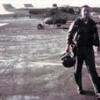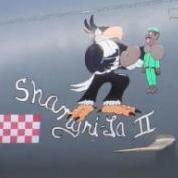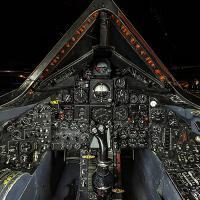Leaderboard
Popular Content
Showing content with the highest reputation on 08/25/2016 in all areas
-
5 points
-
A valid question; here's my opinion based on my involvement as an AF O-6 at NSA working airborne programs for the Asst Dep Director for Operations, Military Affairs and post- retirement as a civilian in OSD (DARO, OUSD/ISR, and NIMA/NGA)at the time The answer is that in the very early 90s, Bill Lynn, the Director of DARPA (actually named "ARPA" at that point but returned to its original title of "DARPA" later in the 90s), and Bill Perry, the DepSecDef (not sure if they were in those exact positions in the very beginning, but by mid-90s they were) believed that unmanned aircraft had the potential to revolutionize airborne operations, starting with ISR, by reducing personal exposure to threats, enabling extended ISR (long duration ops) and save money by reducing the manpower costs in the systems. Additionally, they believed that a new acquisition concept called the Advanced Concept Technology Demonstration (ACTD) could speed up the introduction of new systems from the current (in the 90s) and painful 15-20 years. The idea was to marry up the contractor side and the government side early in the development cycle to better work out operational issues while designing the vehicles (sounds good...didn't work!). They married the two ideas and DARPA initiated the High Altitude Endurance (HAE) and Medium Altitude Endurance (MAE) programs in 1994. The HAE program envisioned two platforms; a high altitude "U-2-like" vehicle and a smaller low observable, craft for better penetration of highly defended areas, referred to as "tier 2+ and "Tier 3-" in their concept terminology. The MAE program started with an existing much less capable unmanned RPA called the "Gnat", built by General Atomics for another purpose. You'll note here that this effort was a DARPA technology development effort, not an acquisition effort responding to an approved DoD mission need. In fact, the Air Force was not particularly enamored with the idea of unmanned mission aircraft and did not support the effort; there was no AF money or manning in the POM to support it. In fact the HAE program plan itself says there is only one required outcome...and let me quote from the ARPA 6 Oct 1994 ver 1.0 HAE CONOP..."A dominant objective of the HAE UAV program is to obtain the maximum capability possible for a set, non-waiverable Unit Flyaway Price (UFP); accordingly, while there are performance objectives, the only requirement that must be met is the UFP." In other words, it doesn't have to do anything except fly, hold a camera, and cost less that $10 million a copy; no operational needs have to be satisfied. To many in the system, the real effort was for DARPA to develop the new acquisition concept, using the HAE and MAE as exemplars. The AF eventually got the aircraft because the outcome of an ACTD was to be either: 1) a failed program, so cancel it, 2) showed promise, so move on and correct issues, or 3) Provide program residuals to the eventual user (AF in this case) for them to decide to either keep and operate or dump. The ARPA and SECDEF seniors decided it flew, collected something, and (sort of) met the UFP goal (at about $15.5 each), so they chose option 3 and passed it all to the AF (both HAE and MAE, although the DarkStar segment of HAE was cancelled after it crashed on flight 2. Why they kept it was the usual case of political and industrial influence, I guess. Some of us suggested the best course of action was to dump the Global Hawk because it met few operational needs, would cost too much to upgrade (if it could ever be upgraded...too little space, too little power, too little payload), and met few of the original desired capabilities, We felt it would be cheaper to take the money and start with a clean sheet design, using the knowledge gained to drive the new (unmanned) platform (which we referred to as "Global Truck"). The estimated $200-400 million extra was consider too much money by leadership, so we stay on the "cheap" track...which I suspect has cost us an extra $5-8 Billion by now (just my guess). As for the ACTD experiment, it hit a few bumps, too. When the Predator program was turned over to the AF and told to operate it, they found the DARPA program provided no money or manpower in the DoD budget to do so, no tech data was ever developed for the Service (it was all contractor proprietary) so they couldn't fix it, no ground control systems built except the contractor's test stuff so they couldn't deploy or fly it fly, No additional money was provided by DoD or Congress to the AF so the AF started a program called "Predator 911" to find money (to operate and buy support) and manpower, and facilities, "robbing" it from the current and future years budgets, causing major disruptions for years. As for GH, the idea of killing the U-2 and replacing it with the GH didn't float either, because the GH had practically no operational capability as delivered and it took a decade to develop the RQ-4B with more capability and slightly better sensors. So, that's why we have it! BTW, as far as Perry and Lynn were concerned, the success of unmanned systems since then probably indicates their vision was a success, and I can't really argue that they'd be wrong. Its all in your perspective.3 points
-
That's precisely my point; there are many folks that -- quite ignorantly -- see the mere remote piloting capability as single-handedly being the one attribute that makes one air vehicle more awesomer than another. It is inevitable that at some point there will be an unmanned vehicle that is quite capable of substantially better HAISR than the Deuce...but that won't be exclusively because the vehicle is not manned.2 points
-
Aspiring fighter pilot here. Can some of you experienced guys elaborate on the right attitude and outlook on flying to be successful as a fighter pilot? Has the "right stuff" changed from Tom Wolfe's definition?1 point
-
Everyone is hung up on flying "aptitude" when the real focus needs to be "attitude". Give me a MAF guy who really wants to fly fighters and has a kickass aggressive attitude and he/she will do fine. I've known guys in almost every fighter who cross flowed back in the day. A lot of them were badass dudes. I saw some great potential students end up in T-1s or others because of bad luck/timing. Get some of them cross flowed and they'll do just fine after some experience.1 point
-
1 point
-
This. I know some dudes might foam at the mouth at this opportunity, but step back and look at it from big AF's perspective. Do you really think ACC is going to bring dudes over to be wingmen (when their peers are IPs) and do anything other than fill shitty squares with them? A few will make it happen, but the odds are seriously stacked against them. GTFO ASAP. It really IS that much better outside AD.1 point
-
In the last crossflow, some of the former MAF guys fit in just fine, did very well, becoming FS/CC's. I think at least one guy went on to become an OG/CC. Obviously as well, some did not. The big kicker will be if the MAF WG/CC's are going to pick the #1 MAF stratted pilot, the best suited to get through the fighter training pipeline, or the best candidate that the upper level leadership would have chosen.1 point
-
Ouch Sent from my iPhone using Tapatalk Follow on question for 11Fs: there's all this talk of shitty manning in rated staff jobs that require an 11F - are most/any of these jobs worth doing or "ops staff" type jobs? If they aren't manned now and haven't been for a while are they jobs that actually need to be done? Both an honest and rhetorical question1 point
-
You at XL? If so then bet I know who...he used to be in my sqdn, doesn't surprise me one bit lol. Like Fuzz said; I wouldn't be surprised if this was just a ploy to get more "11F" bodies for staff jobs. If that's the case, then why waste time getting them in fighters at all...they've used other 11X's to fill them in the past. What's a young major (or major-select) that's just a wingman gonna bring to that table anyways?1 point
-
Got the same email from my squadron commander, apparently they are looking for mid-level captains was a rumor I heard, so by the time they finish IFF, B-course, mission ready they'll be Major selects. Possibly sounds like they really just want 11F pilots to fill staff billets.1 point
-
1 point
-
What do they have you doing to "pay back" this wonderful educational experience?1 point
-
1 point
-
1 point
-
FWIW to whoever is considering school versus punching out, I definitely wish I had 7 day opted rather than go to school and accept the ADSC. If I could do it over again, I would have left. Right now, I'm leaving the moment my new commitment is up.1 point
-
In most cases it probably would be better, IF it does what you need and you can afford it. Although I could be accused of being a bit biased after 50 years in the AF recce business (25 with with the U-2 program), I really don't think I am. The GH is a great little aircraft ("little" mostly referring to size, weight, and power) and I think the Teledyne Ryan and Northrop Grumman people did a pretty good designing and building it considering the political constraints they were working under. Can you imagine what a prime would wind up with if a new program started out with "Build us a new fighter-bomber, make it unmanned, and make it cost less than $25 million, and it doesn't have to do anything specific as long as it stays under $25 mil a copy." The problem with the GH as an operational ISR platform is that no one ever went to the operator or user, and asked what they needed, and turned them into system requirements. Virtually every suggested capability in the original ARPA CONOP was left out because the UFP limit precluded adding them to the design (things like effective sensors...no SIGINT at all, no off-track EO/IR (LOROP), no ability to switch sensors to meet mission needs, no self-protection systems, no significant O&M savings (some people talk about lower flying hour costs, but they aren't much lower per hour, and it flies nearly 100 Kts slower than the U-2 so you use up more hours coming and going!), and no ability to deal with high threat areas. Of course, that last one isn't the GH's fault...remember, the HAE CONOPS was supposed to include two vehicles. The DarkStar was cancelled and it was the segment that was supposed to handle the "...economical solution to theater commanders RSTA needs---near-real time reconnaissance capability against high-value, well-defended targets." So, unmanned is good in many cases; unmanned with no capability and no budget to support it isn't!1 point
-
Doors that absorb light primarily in the center of the visible spectrum.1 point
-
The system was supposed to be gridlocked. I don't like Pres O and thankfully we have a house and senate that can shut hum down, executive orders can and should be shredded by the next president. He had 2 years of control of all houses and could have done anything, but instead rammed the ACA through on Christmas eve. The constitution is the greatest document ever conceived by man, and we should move back toward it.1 point
-
10,000 hrs UNDER BQZIP's Mom and you weren't crushed to death? Go with DFC story...1 point
-
As someone who has not changed his avatar, I find your change of avatar offensive.1 point











